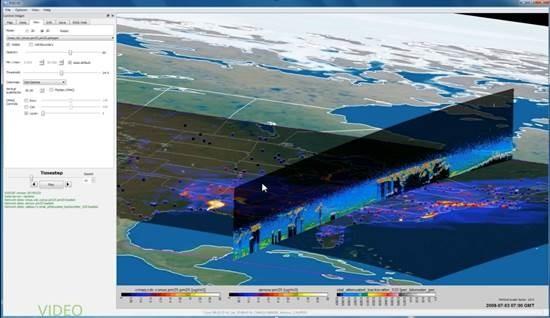High Performance Computing: The Computational Resources behind the Agency’s Environmental Modeling and Visualization
High Performance Computing (HPC) provides the infrastructure, software and technical support for EPA researchers and scientists to run their own compute jobs on EPA HPC machines. This enables quick and easy access to the resources needed for a variety of research, including work on the Community Multiscale Air Quality Model (CMAQ) and the General Coastal Ecosystem Model (GCEM).
The main server that provides high-end scientific computing resource for Vis/HPC projects and models is the HPC system Sol.
Sol is shared by scientists in the Office of Research and Development (ORD) and the Office of Air and Radiation (OAR). The primary applications are atmospheric modeling, computational fluid dynamics, computational chemistry, and statistical modeling. ORD projects are allocated time on the HPC system through an annual review process. Allocations for ORD and OAR projects total about 13 million CPU hours for FY 2016.
Community Multi-Scale Air Quality Model (CMAQ): Is powerful computational tool used by EPA and states for air quality management
Visualization Resources
Sophisticated visualization hardware and software support high-end, R&D visualization computing, providing the ideal technology for projects such as modeling the human respiratory system or wind flow through an urban landscape. These visualizations can be converted to animations for display or graphics suitable for publishing.

